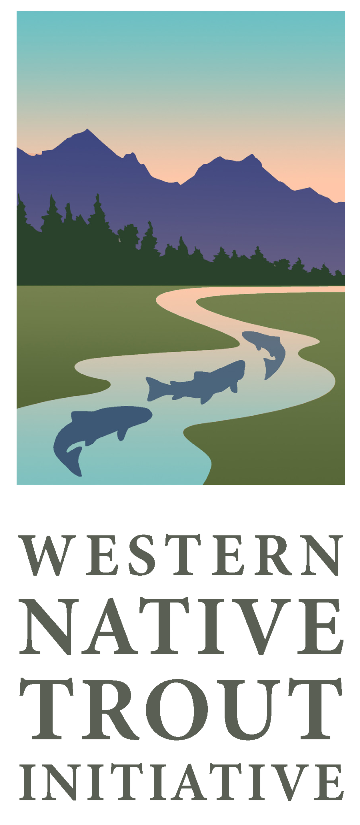The Bear River watershed, which is located in northeastern Utah, southeastern Idaho, and southwestern Wyoming, comprises 19,425 km² of mountain and valley lands. The Bear River crosses state boundaries five times and is the largest stream in the western hemisphere that does not empty into the ocean; instead it ends up in the Great Salt Lake. It ranges in elevation from 1,283 meters to nearly 3,962 meters. This landscape is unique in that it is entirely enclosed by mountains, thus forming a huge basin with no external drainage outlets. The Bear River is the largest tributary to the Great Salt Lake. Multiple irrigation diversion structures and other barriers fragment the Upper Bear River drainage, which spans Northern Utah, Southeast Idaho, and Southwest Wyoming. Agricultural lands throughout the basin, both developed and undeveloped, as well as urban areas are located in valleys along the main “stem” of the river and its tributaries. About half of the land is privately owned. In addition to these private lands, the Bear River watershed includes vast amounts of federal (both Bureau of Land Management and Forest Service) and state lands (managed by Utah and Wyoming) that serve a wide range of natural and agricultural functions, each of which generates unique impacts and demands on water resources. Three-quarters of the land is used for grazing, with small areas of irrigated hay and small grain production in the valleys. There are also oil and gas production sites and areas of historic phosphate and coal mining. Major water uses in the Bear River Basin include: agriculture, irrigation, municipal and industrial uses, power generation, and recreation. The Bear River drainage supports multiple life history strategies for Bonneville Cutthroat Trout (BCT).
The Western Native Trout Initiative has made a commitment to protect stronghold habitats, restore habitat connectivity, and enhance resilience to extreme environmental conditions and fluctuations for 10 Bear River GMU BCT stronghold populations by focusing our efforts on mid-elevation lands that experience a variety of land uses, some of which have contributed to fragmentation of the landscape, thus presenting barriers to fish accessing high-quality upstream habitats on federal lands. WNTI is working to elevate and accelerate conservation for BCT in the Bear River drainage by securing partners and the financial resources to implement projects that address aging infrastructure contributing to degradation of riparian habitat, barriers to fish movement, and increased sedimentation. We feel these projects support our overall outreach themes and messaging around western water and working landscapes, the importance of upgrading old irrigation/diversion infrastructure, as well as our native trout habitat restoration work and the importance of these native fish environmentally and also as economic drivers for rural communities.
The Western Native Trout Initiative (WNTI) is working with the interagency Bonneville Cutthroat Trout Team (ID, NV, UT, WY) and its member state and federal agencies and nonprofit organizations to remove and replace aging infrastructure in order to protect Bonneville Cutthroat Trout strongholds, restore habitat connectivity, and enhance resilience to climate change by opening access to high-quality upstream habitats and cold, clean water on both public and private lands. The projects will address extreme bank erosion and land loss while improving habitat for an important fishery, upgrade aging and dilapidated irrigation infrastructure for private landowners, improve water supply reliability, and reduce Operations and Maintenance costs.
Between 2018 and 2022, this multi-year effort has consisted of 19 projects in Idaho, Utah, and Wyoming that will remove a total of 24 push up dams and diversion structures, perched culverts, and a concrete dam to restore +/-144.25 stream miles. Projects address extreme bank erosion and land loss while improving habitat for an important fishery, upgrade aging and dilapidated irrigation infrastructure for private landowners, improve water supply reliability, and reduce Operations and Maintenance costs.
VIEW a poster designed for the American Fisheries Society Western Division meeting in May 2023.
WATCH a film produced by the Resources Legacy Fund about partnership efforts in the Bear River Watershed.
READ the Epic Tale of the Bear River cutthroat trout (episode 1 The Fall of Evanston Dam)
READ the Epic Tale of the Bear RIver cutthroat trout (episode 2 The Amazing Almy Ditch)
READ an Op Ed in the Salt Lake City Tribune about the Bear River watershed partnership, co authored by WNTI Coordinator, Therese Thompson, and Resources Legacy Fund Program Office, Shara Sparks
READ a September 2021 article written by Trout Unlimited’s Brett Prettyman called Five hundred miles of river memories in three states about a WNTI projects tour in the Bear River Watershed.
READ a December 2020 article by the Intermountain West Joint Venture about WNTI and our partners working together in the Bear River (Idaho, Utah, Wyoming).
We are still working to further build out this page and add links for more detailed information about each project WNTI has collaborated on. Please check back later!
